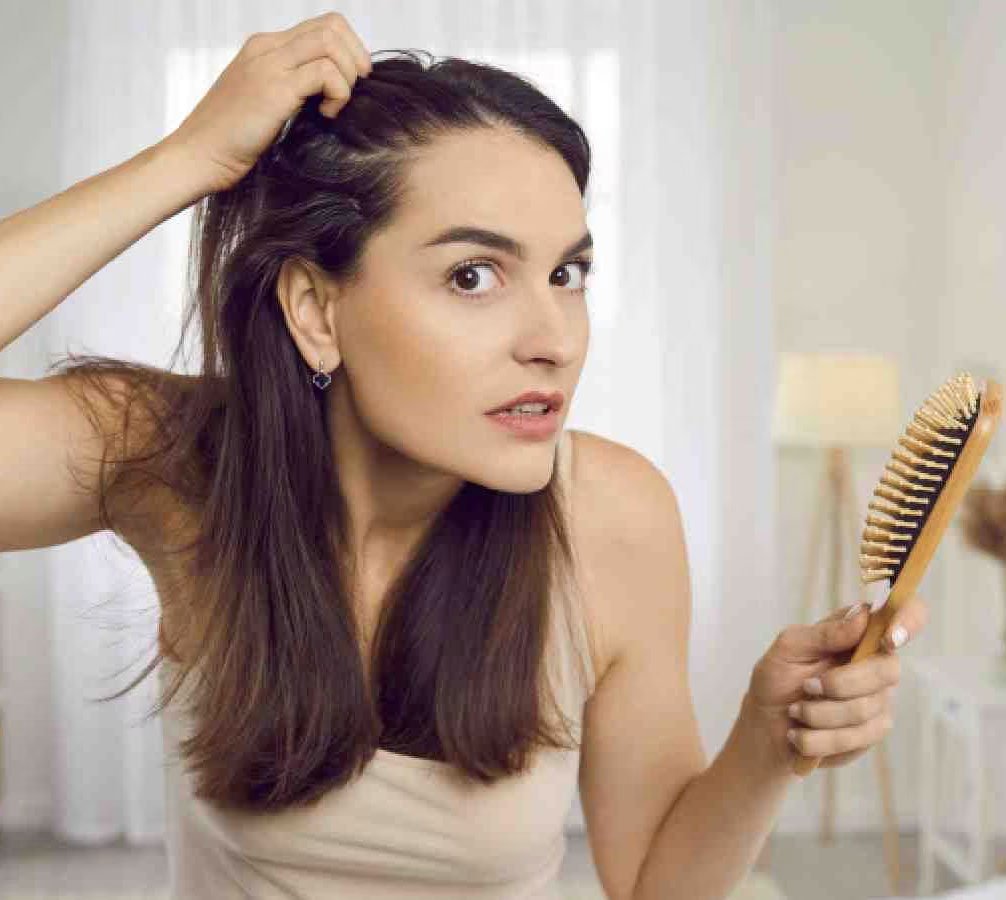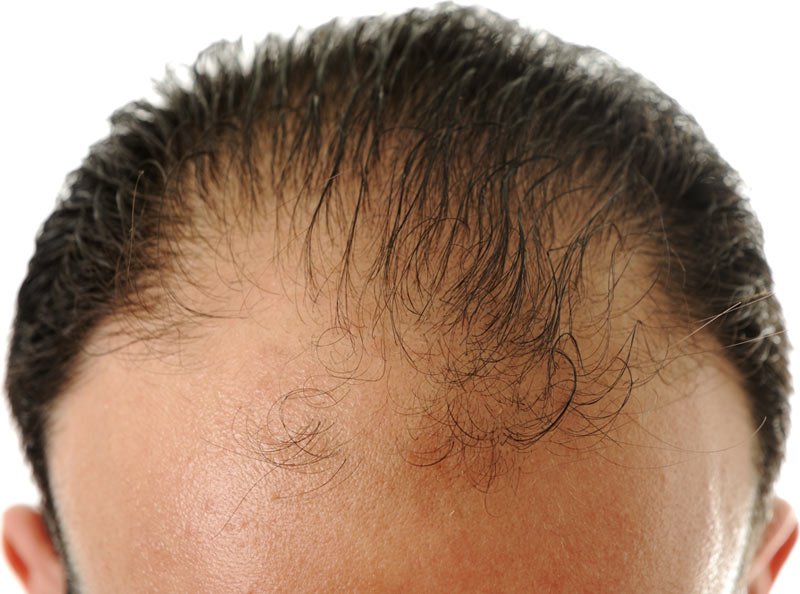- Home
- Hair Loss
- Hair Transplant Cost
- Hair Treatment
- HT Techniques
- Clinics
- Results
- Doctors
- Blog
- Contact Us
- Home
- Hair Loss
- Hair Transplant Cost
- Hair Treatment
- HT Techniques
- Clinics
- Results
- Doctors
- Blog
- Contact Us

Hair Loss and scalp problems are very common complaints from many patients to Dermatologists. Hair Loss can be categorized into many sub-sections and they can happen due to genetic conditions, hair pulling, stress, or due to the environment around. Any type of hair loss can cause distress in a person and can also lead to that person looking older than their actual age.

Androgenetic alopecia, commonly known as male pattern baldness, is a genetic condition that predominantly affects men. It is characterized by a receding hairline and thinning of hair on the crown of the scalp. This type of hair loss is driven by hormonal factors and can start in the late teens or early adulthood.

Similar to male pattern baldness, female pattern baldness is a genetic form of hair loss affecting women. It typically causes a widening part and thinning of hair, especially on the crown area. Hormonal changes, aging, and genetic predisposition are contributing factors to this condition.

Telogen effluvium is a temporary form of hair loss characterized by a significant shedding of hair due to various factors, such as stress, illness, pregnancy, or certain medications. The hair follicles enter the resting phase prematurely, leading to excessive hair loss.

Alopecia areata is an autoimmune condition that causes hair loss in patches. The immune system mistakenly attacks the hair follicles, resulting in smooth, round areas of baldness on the scalp, face, or other parts of the body. This type of hair loss can be unpredictable and may resolve on its own or require treatment.

Traction alopecia occurs when there is excessive tension or pulling on the hair, often due to tight hairstyles like braids, ponytails, or extensions. Over time, this constant pulling can damage the hair follicles, leading to hair thinning and loss in the affected areas.

Cicatricial alopecia, also known as scarring alopecia, is a type of hair loss characterized by irreversible damage to the hair follicles, resulting in scar tissue formation. The scarred areas hinder hair regrowth, leading to permanent hair loss. Causes include inflammation, infections, or underlying medical conditions.
Genetics play a significant role in hair loss. If your family has a history of hair thinning or baldness, you may be genetically predisposed to experience similar concerns.
Hormonal changes, especially during puberty, pregnancy, and menopause, can trigger hair loss. Fluctuations in hormones can disrupt the hair growth cycle, leading to noticeable shedding.
Certain medications, such as chemotherapy drugs, blood thinners, and antidepressants, can cause hair loss as a side effect. It’s crucial to consult your healthcare provider if you notice unusual hair thinning while taking any medications.
Various medical conditions like thyroid disorders, autoimmune diseases, and alopecia areata can contribute to hair loss. Managing the underlying medical issue is crucial in addressing hair loss effectively.
Chronic stress can disrupt the natural hair growth cycle, leading to increased shedding and hair thinning. Implementing stress-reducing techniques and maintaining a balanced lifestyle can mitigate this effect.
A diet lacking essential nutrients like vitamins, minerals, and proteins can weaken hair and contribute to hair loss. Ensure your diet is rich in these vital elements to support healthy hair growth.
Deficiencies in specific vitamins and minerals, such as iron, zinc, and biotin, can directly impact hair health. Supplementing these nutrients or adjusting your diet accordingly can help combat hair loss.
Smoking, excessive alcohol consumption, and a sedentary lifestyle can adversely affect your hair health. Adopting a healthier lifestyle by quitting smoking, moderating alcohol intake, and staying physically active can aid in reducing hair loss.
Hair loss can be a stressful and upsetting experience. There are various treatment options available from over-the-counter medications, to doctor-recommended steroids or hormonal blockers to stop hair loss. Minoxidil, Mesotherapy, and Hair Transplant have shown by various researches that they can induce new hair growth.
Medications are a common treatment option for hair loss caused by androgenetic alopecia, the most common type of hair loss. The two most commonly prescribed medications are minoxidil (Rogaine) and finasteride (Propecia).
Minoxidil: Minoxidil is a topical medication that can be applied to the scalp twice a day. It works by widening blood vessels in the scalp, which allows more nutrients to reach the hair follicles. Minoxidil can be effective in slowing hair loss and regrowing some hair.
Finasteride: Finasteride is an oral medication that can be taken once a day. It works by blocking the production of dihydrotestosterone (DHT), a hormone that can damage hair follicles. Finasteride can be effective in slowing hair loss and regrowing some hair, but it is not recommended for women.
Hair Transplant is the quickest and the most viable solution today. A person’s entire scalp is covered by nearly 1 lakh terminal hair follicles.
Every follicle undergoes an individual cycle of growing and resting periods, and it is completely normal to lose about 100 strands of hair in a day. But once you start to notice hair fall with hair thinning then you should consult a doctor at Hairfree and Hairgrow, as soon as possible.
There are two main types of hair transplants:
How hair transplants work
Both FUT and FUE procedures are performed under local anesthesia. The surgeon will make small incisions in the recipient area and then insert the grafts. The grafts will eventually heal and the hair will start to grow back.
Recovery from Hair Transplants
Recovery from hair transplants can take several weeks. You may experience some pain, swelling, and redness in the donor and recipient areas. You’ll also need to avoid strenuous activity and wear a protective cap for a few days.
Risks of hair transplants
Hair transplants are generally safe procedures, but there are some risks, including:
The results of hair transplants can vary depending on the individual’s hair type and the skill of the surgeon. Most people see some improvement in hair density and coverage within a few months of the procedure. However, it can take up to a year for the full results to be seen.
Is hair transplantation right for you?
If you’re considering a hair transplant, it’s important to talk to your doctor or a hair restoration specialist to see if it’s the right option for you. They can assess your hair loss and discuss the risks and benefits of the procedure.
Laser treatment is a way to use low-level laser light to stimulate hair growth. It is thought to work by reducing inflammation in hair follicles and by increasing blood flow to the scalp.
Laser treatment is thought to be most effective for treating alopecia areata, a type of hair loss that causes bald patches. However, it may also be effective for treating other types of hair loss, such as male pattern baldness.
How laser treatment works
Laser treatment is usually performed in a doctor’s office. The doctor will use a hand-held laser device to shine light on the scalp. The treatment is painless and takes about 30 minutes.
The results of laser treatment can vary depending on the individual and the type of hair loss. Some people see significant hair growth after only a few treatments, while others may not see any results.
Is laser treatment right for you?
If you are considering laser treatment for hair loss, it is important to talk to your doctor. They can assess your hair loss and determine if laser treatment is right for you.
With the right care and habits, you can maintain a healthy head of hair. Here are some effective tips to prevent hair loss and promote a vibrant mane.
A well-balanced diet rich in vitamins and minerals is crucial for maintaining healthy hair. Incorporate foods like leafy greens, nuts, eggs, and fruits into your meals to provide essential nutrients to your scalp and hair follicles.
Regularly washing your hair helps to keep your scalp clean and free from excess oils and dirt that could lead to hair loss. Additionally, ensure you keep your hair adequately hydrated by using a suitable conditioner after each wash.
Frequent use of heating tools such as straighteners and curling irons can weaken your hair strands, making them more prone to breakage and hair loss. Limit the use of these styling tools to protect your hair’s health.
A scalp massage stimulates blood circulation to the hair follicles, promoting hair growth and preventing hair loss. Incorporate a gentle scalp massage into your routine to reap the benefits.
Opt for hair products that suit your hair type and are free from harsh chemicals. Natural and gentle products can help maintain the health of your hair and prevent damage.
Stress can be a significant contributor to hair loss. Incorporate stress-relieving activities such as meditation, yoga, or regular exercise into your routine to keep your stress levels in check and preserve your hair.
Excessive exposure to the sun and pollution can damage your hair. Wear a hat or use a scarf to shield your hair from the sun, and consider protective styles to minimize exposure to pollutants.
Hair loss of Alopecia and scalp problems are very common complaints in the everyday Dermatologic Clinic. Hair loss of any kind frequently causes major distress for the patient and can lead to anxiety depression or an inferiority complex. It can be genetic or due to some medical illness, but there are always treatment options available the patients need to understand that the treatment of hair loss takes time and patience.
The entire scalp contains around 1 lakh terminal hair follicles. Every follicle undergoes an individual cycle with growing and resting periods. Normally 40-70-100 hairs are shed per day and new growth occurs simultaneously. But once you start to notice hair fall with hair thinning then you should consult a doctor at Hairfree and Hairgrow, as soon as possible.
Hair loss can be caused by various factors, including genetics (hereditary hair loss), hormonal changes and medical conditions (e.g., thyroid disorders), certain medications, poor diet, stress, and improper hair care.
To reduce hair fall, you can:
Hair loss can be associated with deficiencies in several vitamins and minerals, including:
Incorporate these foods into your diet to promote hair health:
Different oils work for different individuals, but popular choices for reducing hair fall include:
It is normal to lose some hair daily. Hair loss can vary based on genetics, diet, lifestyle, and overall health. Losing 50-100 hairs per day is considered normal, and it's typical for individuals to experience some thinning as they age, even at 25. However, if you notice excessive or sudden hair loss, consulting a healthcare professional is advisable.
Hairfree & Hairgrow has grown exponentially and now we do provide extra facilities to our clients. We provide them with lodging areas, hygienic food and refreshments
©2024 Hairfree & Hairgrow All rights reserved. Developed by Priyesh Khatrani